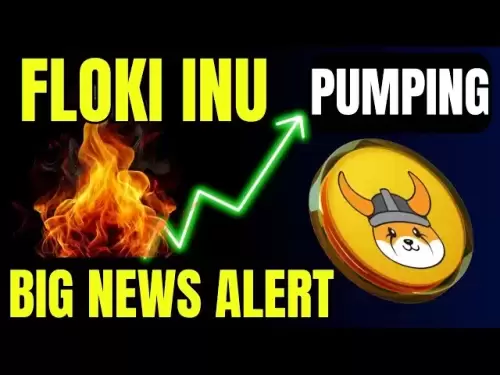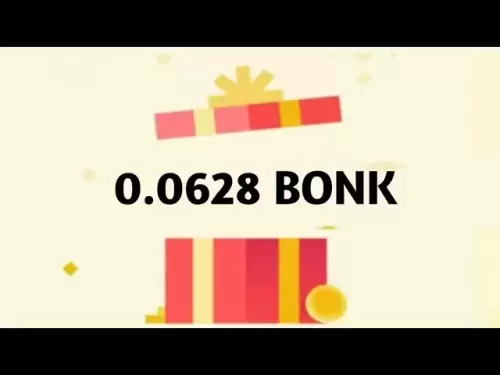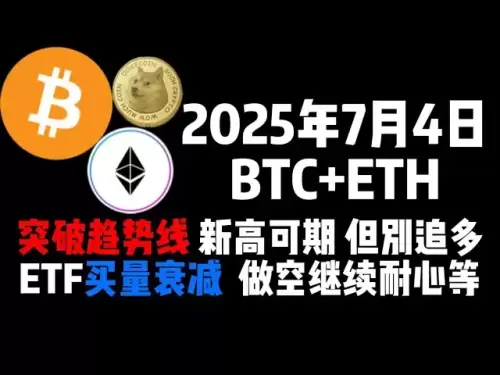-
 Bitcoin
Bitcoin $108,043.3894
-1.71% -
 Ethereum
Ethereum $2,519.1878
-3.09% -
 Tether USDt
Tether USDt $1.0004
-0.01% -
 XRP
XRP $2.2231
-2.72% -
 BNB
BNB $655.3607
-1.06% -
 Solana
Solana $148.3620
-2.84% -
 USDC
USDC $1.0000
0.00% -
 TRON
TRON $0.2838
-0.37% -
 Dogecoin
Dogecoin $0.1648
-4.79% -
 Cardano
Cardano $0.5759
-3.97% -
 Hyperliquid
Hyperliquid $38.4598
-5.19% -
 Sui
Sui $2.9005
-4.22% -
 Bitcoin Cash
Bitcoin Cash $481.1531
-3.80% -
 Chainlink
Chainlink $13.1936
-4.50% -
 UNUS SED LEO
UNUS SED LEO $9.0471
0.41% -
 Avalanche
Avalanche $17.9444
-4.20% -
 Stellar
Stellar $0.2378
-2.60% -
 Toncoin
Toncoin $2.7850
-3.38% -
 Shiba Inu
Shiba Inu $0.0...01148
-3.75% -
 Litecoin
Litecoin $87.3159
-3.73% -
 Hedera
Hedera $0.1557
-3.02% -
 Monero
Monero $314.0980
-1.98% -
 Polkadot
Polkadot $3.3909
-5.10% -
 Dai
Dai $1.0001
0.00% -
 Ethena USDe
Ethena USDe $1.0002
-0.02% -
 Bitget Token
Bitget Token $4.4147
-3.74% -
 Uniswap
Uniswap $6.9933
-9.59% -
 Pepe
Pepe $0.0...09661
-6.72% -
 Aave
Aave $264.1417
-6.16% -
 Pi
Pi $0.4705
-5.23%
What market indicators should be paid attention to before buying Flare(FLR)? How to determine the best time to enter the market?
Before investing in Flare (FLR), analyze price trends, trading volume, market sentiment, technical indicators, and on-chain metrics to determine the best entry time.
May 01, 2025 at 07:07 pm
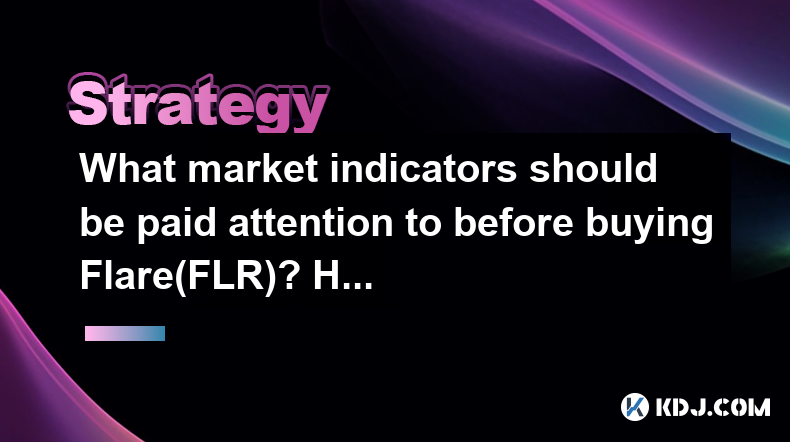
When considering an investment in Flare (FLR), it is crucial to analyze various market indicators to make informed decisions. These indicators can help you understand the current market sentiment, potential price movements, and the overall health of the cryptocurrency. By paying close attention to these factors, you can determine the best time to enter the market and maximize your investment returns.
Understanding Flare (FLR)
Flare (FLR) is a blockchain platform designed to enhance the interoperability between different blockchain networks. It aims to provide developers with the tools to create decentralized applications that can utilize data from various blockchains. Before diving into market indicators, it's essential to have a basic understanding of what Flare offers and its potential in the cryptocurrency ecosystem.
Key Market Indicators to Monitor
Before buying Flare (FLR), several key market indicators should be on your radar. These indicators provide insights into the cryptocurrency's performance and market trends, helping you make a more informed investment decision.
1. Price Trends and Historical Data
Price trends and historical data are fundamental indicators to consider. Analyzing Flare's price over time can help you identify patterns and potential entry points. Use charting tools to observe the cryptocurrency's price movements and look for trends such as:
- Uptrends: Indicating a bullish market where prices are consistently rising.
- Downtrends: Suggesting a bearish market with falling prices.
- Consolidation phases: Where prices move sideways, often preceding a significant move.
2. Trading Volume
Trading volume is another critical indicator that reflects the level of interest and activity in Flare (FLR). High trading volumes often accompany significant price movements, indicating strong market interest. Conversely, low volumes may suggest a lack of interest or a potential lack of liquidity. To monitor trading volume:
- Use platforms like CoinMarketCap or TradingView to track Flare's trading volume over time.
- Compare current volumes to historical averages to gauge market activity.
3. Market Sentiment
Market sentiment can significantly influence Flare's price. Sentiment can be gauged through various sources, including:
- Social media analysis: Platforms like Twitter and Reddit can provide insights into what the community is saying about Flare.
- News and announcements: Keep an eye on official Flare announcements and news that could impact the cryptocurrency's price.
- Sentiment analysis tools: Use tools like Sentiment or LunarCrush to quantify the overall sentiment surrounding Flare.
4. Technical Analysis Indicators
Technical analysis indicators provide a more detailed view of Flare's price movements. Some commonly used indicators include:
- Moving Averages (MA): The 50-day and 200-day moving averages can help identify trends and potential reversal points.
- Relative Strength Index (RSI): The RSI measures the speed and change of price movements, helping to identify overbought or oversold conditions.
- MACD (Moving Average Convergence Divergence): This indicator can signal potential trend changes and momentum shifts.
5. On-Chain Metrics
On-chain metrics offer insights into the underlying blockchain activity of Flare. These metrics can include:
- Transaction volume: High transaction volumes can indicate increased usage and adoption.
- Active addresses: A growing number of active addresses may suggest growing interest and usage.
- Network growth: Metrics like new address creation can signal the expansion of the Flare network.
Determining the Best Time to Enter the Market
Determining the best time to enter the market for Flare (FLR) involves synthesizing the information from the above indicators. Here’s how you can approach this decision:
Analyzing Price Trends and Volume
To determine the best entry point, start by analyzing price trends and trading volume. Look for periods where the price is showing signs of an uptrend, accompanied by increasing trading volume. This combination suggests growing interest and potential for further price increases.
- Use charting tools to identify when Flare's price breaks above key resistance levels with significant volume.
- Consider entering the market when the price is in an uptrend and trading volume is above average, indicating strong market participation.
Assessing Market Sentiment
Market sentiment can also guide your entry timing. Positive sentiment, driven by favorable news or community support, can signal a good time to buy. Monitor social media and news outlets for developments that could positively impact Flare's price.
- If sentiment analysis tools show a high positive sentiment score, it might be an opportune time to enter the market.
- Be cautious of overly optimistic sentiment, as it can sometimes lead to price bubbles.
Using Technical Indicators
Technical indicators can help pinpoint precise entry points. For instance:
- Moving Averages: Consider buying when the short-term moving average (e.g., 50-day MA) crosses above the long-term moving average (e.g., 200-day MA), known as a "golden cross."
- RSI: Look for buying opportunities when the RSI is below 30, indicating an oversold condition, and then rises above this level.
- MACD: A bullish crossover, where the MACD line crosses above the signal line, can be a signal to enter the market.
Evaluating On-Chain Metrics
On-Chain metrics can provide additional confirmation for your entry decision. For example:
- If transaction volume and active addresses are increasing, it could indicate growing adoption and a potential price increase.
- Monitor network growth metrics to see if the Flare ecosystem is expanding, which could support a bullish outlook.
Practical Steps to Enter the Market
Once you have determined that the time is right to buy Flare (FLR), follow these practical steps to execute your trade:
- Choose a reputable exchange: Ensure the exchange supports Flare and has a good reputation for security and user experience.
- Set up an account: Complete the necessary KYC (Know Your Customer) verification processes.
- Deposit funds: Transfer funds to your exchange account, ensuring you use a secure method.
- Place your order: Decide whether to use a market order for immediate execution or a limit order to buy at a specific price.
- Monitor your investment: Keep an eye on Flare's price and market indicators to adjust your strategy as needed.
Frequently Asked Questions
Q1: How can I stay updated with the latest developments on Flare (FLR)?
To stay updated with the latest developments on Flare (FLR), you can:
- Follow Flare's official social media accounts and website for announcements and updates.
- Subscribe to cryptocurrency news outlets and newsletters that cover Flare.
- Join Flare-focused communities on platforms like Telegram or Discord to engage with other enthusiasts and developers.
Q2: What are the risks associated with investing in Flare (FLR)?
Investing in Flare (FLR) comes with several risks, including:
- Market volatility: Cryptocurrency prices can be highly volatile, leading to significant price swings.
- Regulatory changes: Changes in cryptocurrency regulations can impact Flare's value and adoption.
- Technology risks: As with any blockchain project, there is a risk of technical issues or security breaches.
Q3: Can I use technical analysis alone to make investment decisions on Flare (FLR)?
While technical analysis can provide valuable insights, it should not be used in isolation. Combining technical analysis with fundamental analysis, market sentiment, and on-chain metrics can offer a more comprehensive view of Flare's potential. Relying solely on technical analysis may overlook important factors that could influence the cryptocurrency's price.
Q4: How do I assess the long-term potential of Flare (FLR)?
To assess the long-term potential of Flare (FLR), consider:
- Adoption and partnerships: Look for evidence of growing adoption and strategic partnerships that can enhance Flare's ecosystem.
- Development progress: Monitor the progress of Flare's development roadmap and the release of new features or improvements.
- Community support: A strong and active community can be a good indicator of long-term potential, as it often drives development and adoption.
Disclaimer:info@kdj.com
The information provided is not trading advice. kdj.com does not assume any responsibility for any investments made based on the information provided in this article. Cryptocurrencies are highly volatile and it is highly recommended that you invest with caution after thorough research!
If you believe that the content used on this website infringes your copyright, please contact us immediately (info@kdj.com) and we will delete it promptly.
- Bitcoin's Pattern Break: Are HODLers the Key to the Next Surge?
- 2025-07-04 18:50:12
- Bitcoin Price, Trump's Bill, and the $150K Dream: A NYC Take
- 2025-07-04 19:50:12
- Ethereum, LILPEPE, and the July Bounce: Will Pepe Steal ETH's Thunder?
- 2025-07-04 19:10:12
- Binance Institutional Loans: Unlocking 4x Leverage and Zero Interest for Whales
- 2025-07-04 19:15:12
- Bitcoin Bull Run: Analysts Eye Peak in Late 2025?
- 2025-07-04 19:20:13
- Pepe Indicators, Bullish Forecast: Can the Meme Coin Rally?
- 2025-07-04 19:25:12
Related knowledge
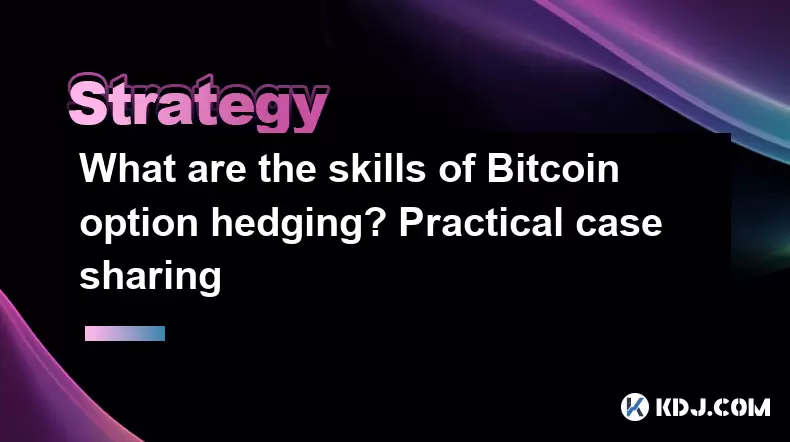
What are the skills of Bitcoin option hedging? Practical case sharing
Jun 24,2025 at 04:01pm
Understanding Bitcoin Option HedgingBitcoin option hedging is a risk management strategy used by traders and investors to protect their positions in the volatile cryptocurrency market. By using options, individuals can limit potential losses while retaining the opportunity for profit. In essence, it allows one to insulate against adverse price movements...
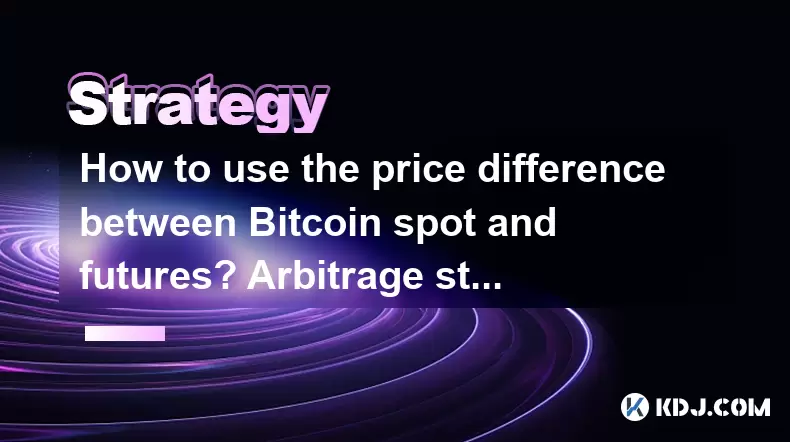
How to use the price difference between Bitcoin spot and futures? Arbitrage strategy
Jun 20,2025 at 02:56pm
Understanding Bitcoin Spot and Futures MarketsTo effectively leverage arbitrage opportunities between Bitcoin spot and futures markets, it's essential to understand the fundamental differences between these two types of markets. The spot market refers to the direct buying and selling of Bitcoin for immediate delivery at the current market price. In cont...
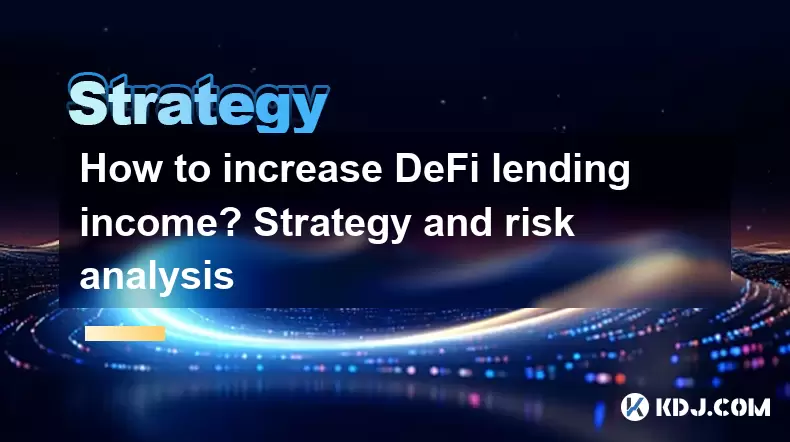
How to increase DeFi lending income? Strategy and risk analysis
Jun 24,2025 at 02:08pm
Understanding DeFi Lending and Its Income PotentialDeFi (Decentralized Finance) lending has emerged as a popular way to earn passive income in the cryptocurrency space. Unlike traditional banking systems, DeFi lending platforms allow users to lend their crypto assets directly to borrowers without intermediaries. The lenders earn interest based on the su...
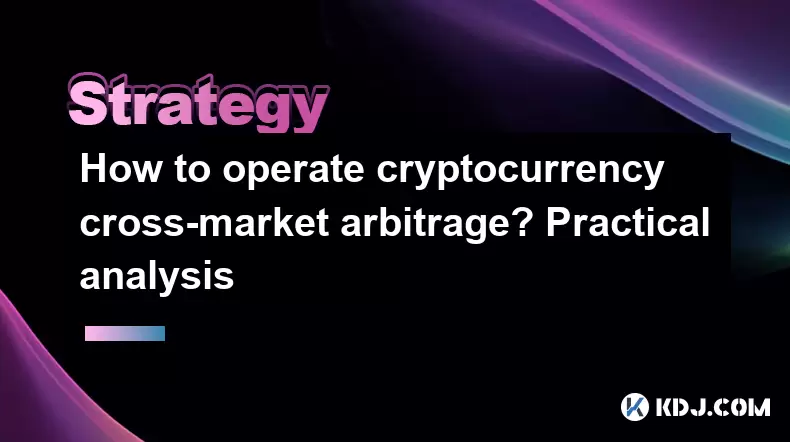
How to operate cryptocurrency cross-market arbitrage? Practical analysis
Jun 23,2025 at 04:01am
Understanding Cryptocurrency Cross-Market ArbitrageCryptocurrency cross-market arbitrage involves taking advantage of price differences for the same digital asset across different exchanges. The core idea is to buy low on one exchange and sell high on another, capturing the profit from the discrepancy. This strategy relies heavily on real-time market da...

How to make profits from high-frequency cryptocurrency trading? Sharing core skills
Jun 19,2025 at 05:07pm
Understanding High-Frequency Cryptocurrency TradingHigh-frequency trading (HFT) in the cryptocurrency market involves executing a large number of trades at extremely fast speeds, often within milliseconds. This method relies on small price discrepancies across exchanges or within a single exchange’s order book. Traders use complex algorithms and ultra-l...
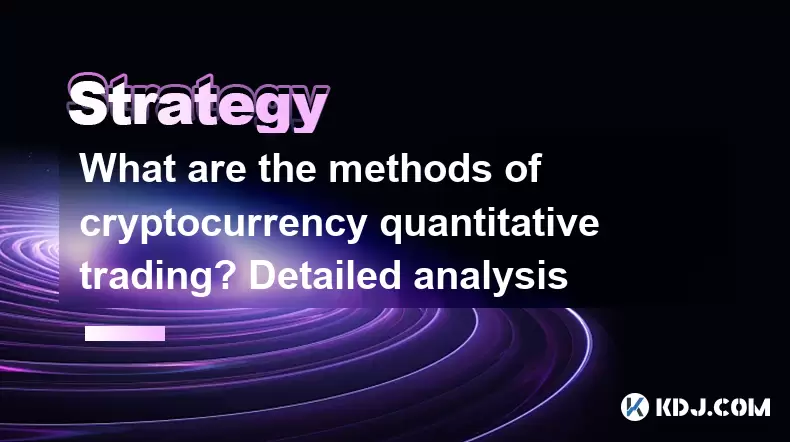
What are the methods of cryptocurrency quantitative trading? Detailed analysis
Jun 22,2025 at 11:07pm
Understanding the Core of Cryptocurrency Quantitative TradingCryptocurrency quantitative trading refers to the use of mathematical models and algorithms to execute trades in the digital asset market. Unlike traditional discretionary trading, which relies heavily on human judgment, quantitative trading leverages data-driven strategies to identify profita...

What are the skills of Bitcoin option hedging? Practical case sharing
Jun 24,2025 at 04:01pm
Understanding Bitcoin Option HedgingBitcoin option hedging is a risk management strategy used by traders and investors to protect their positions in the volatile cryptocurrency market. By using options, individuals can limit potential losses while retaining the opportunity for profit. In essence, it allows one to insulate against adverse price movements...

How to use the price difference between Bitcoin spot and futures? Arbitrage strategy
Jun 20,2025 at 02:56pm
Understanding Bitcoin Spot and Futures MarketsTo effectively leverage arbitrage opportunities between Bitcoin spot and futures markets, it's essential to understand the fundamental differences between these two types of markets. The spot market refers to the direct buying and selling of Bitcoin for immediate delivery at the current market price. In cont...

How to increase DeFi lending income? Strategy and risk analysis
Jun 24,2025 at 02:08pm
Understanding DeFi Lending and Its Income PotentialDeFi (Decentralized Finance) lending has emerged as a popular way to earn passive income in the cryptocurrency space. Unlike traditional banking systems, DeFi lending platforms allow users to lend their crypto assets directly to borrowers without intermediaries. The lenders earn interest based on the su...

How to operate cryptocurrency cross-market arbitrage? Practical analysis
Jun 23,2025 at 04:01am
Understanding Cryptocurrency Cross-Market ArbitrageCryptocurrency cross-market arbitrage involves taking advantage of price differences for the same digital asset across different exchanges. The core idea is to buy low on one exchange and sell high on another, capturing the profit from the discrepancy. This strategy relies heavily on real-time market da...

How to make profits from high-frequency cryptocurrency trading? Sharing core skills
Jun 19,2025 at 05:07pm
Understanding High-Frequency Cryptocurrency TradingHigh-frequency trading (HFT) in the cryptocurrency market involves executing a large number of trades at extremely fast speeds, often within milliseconds. This method relies on small price discrepancies across exchanges or within a single exchange’s order book. Traders use complex algorithms and ultra-l...

What are the methods of cryptocurrency quantitative trading? Detailed analysis
Jun 22,2025 at 11:07pm
Understanding the Core of Cryptocurrency Quantitative TradingCryptocurrency quantitative trading refers to the use of mathematical models and algorithms to execute trades in the digital asset market. Unlike traditional discretionary trading, which relies heavily on human judgment, quantitative trading leverages data-driven strategies to identify profita...
See all articles





















